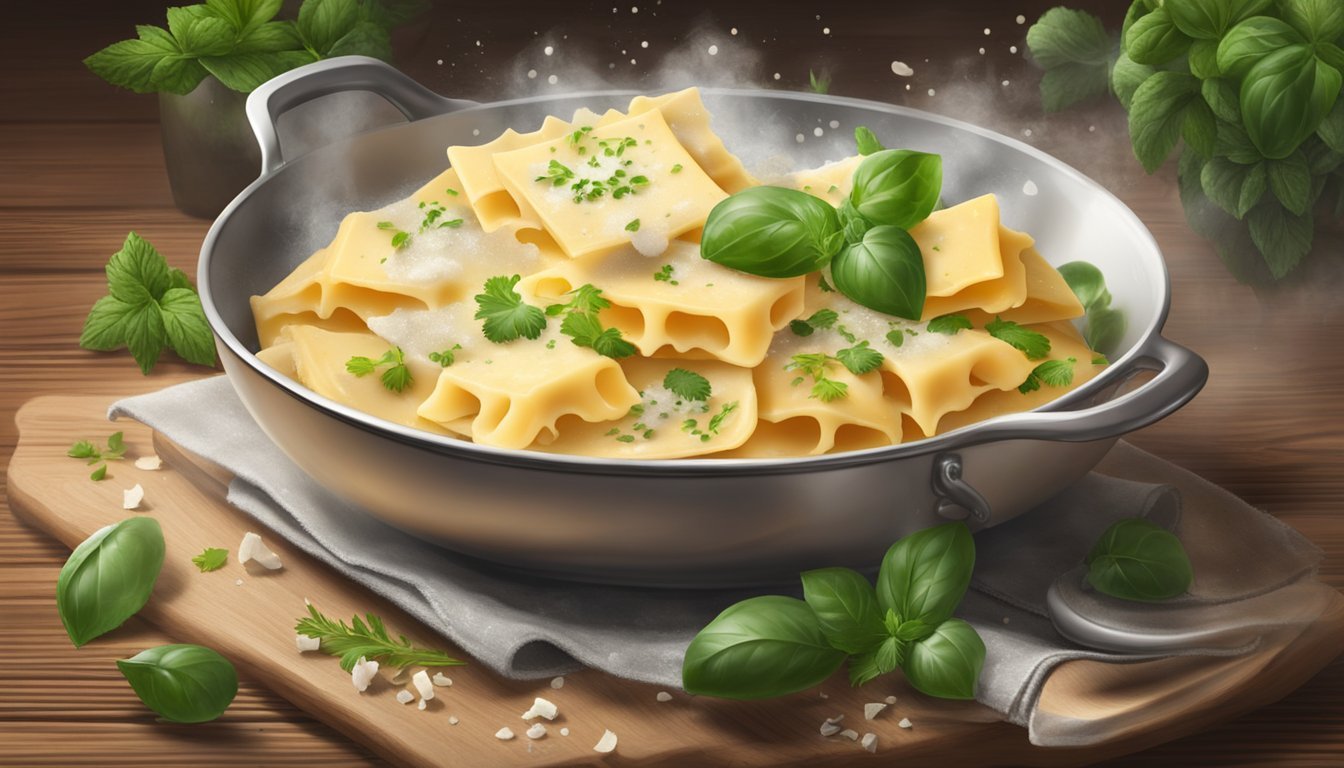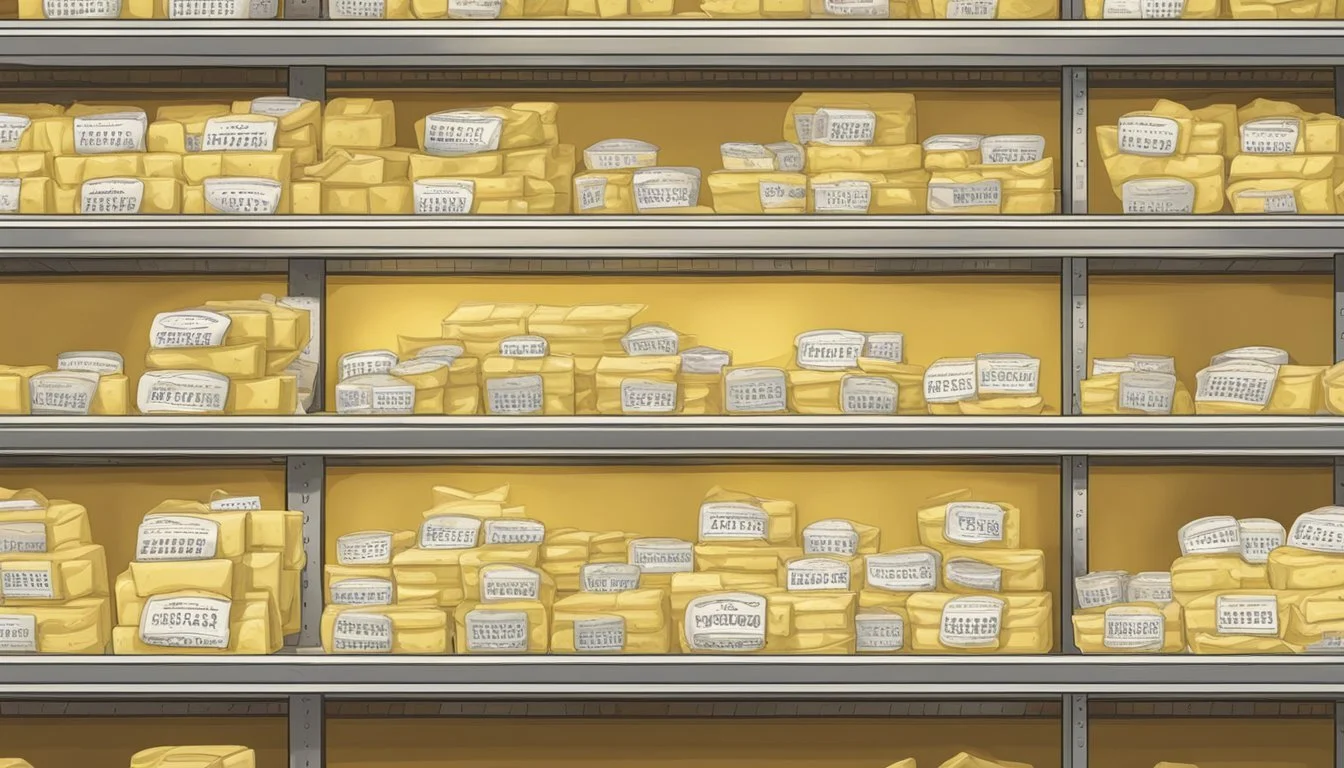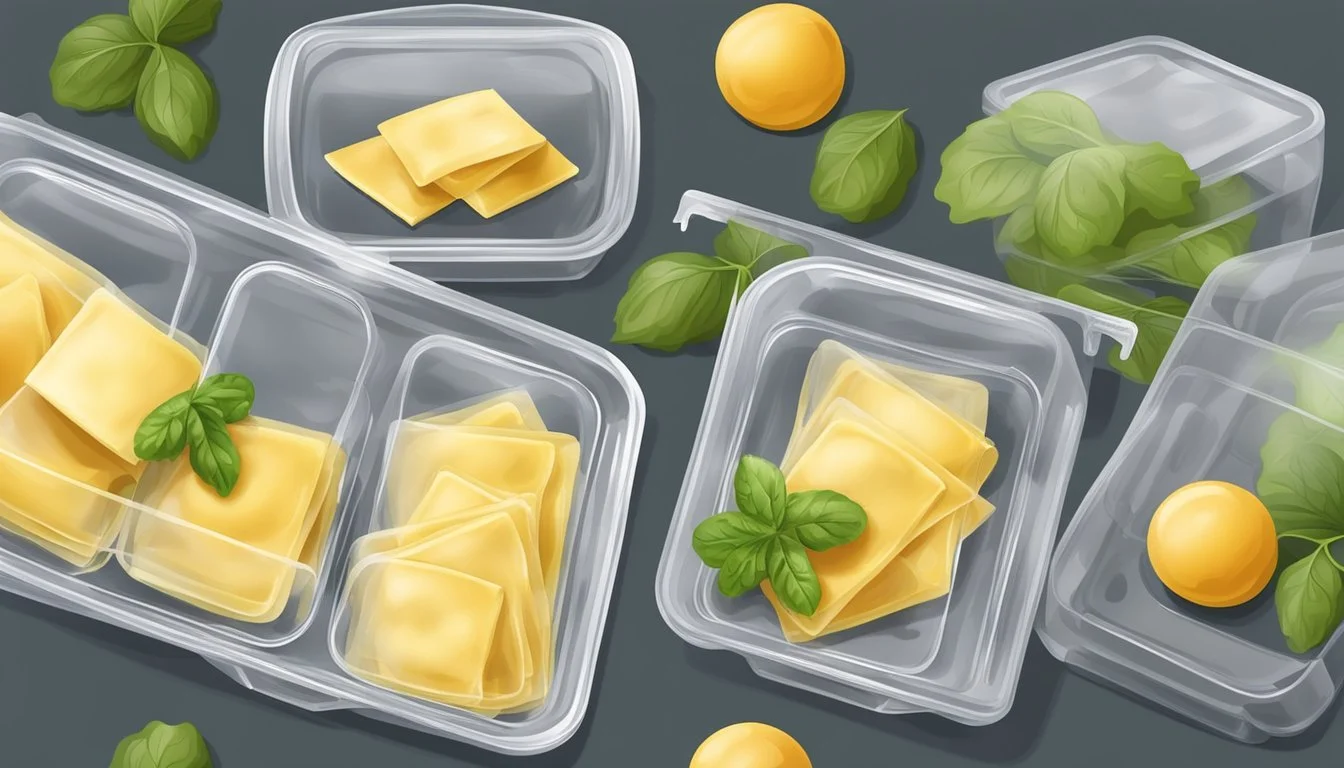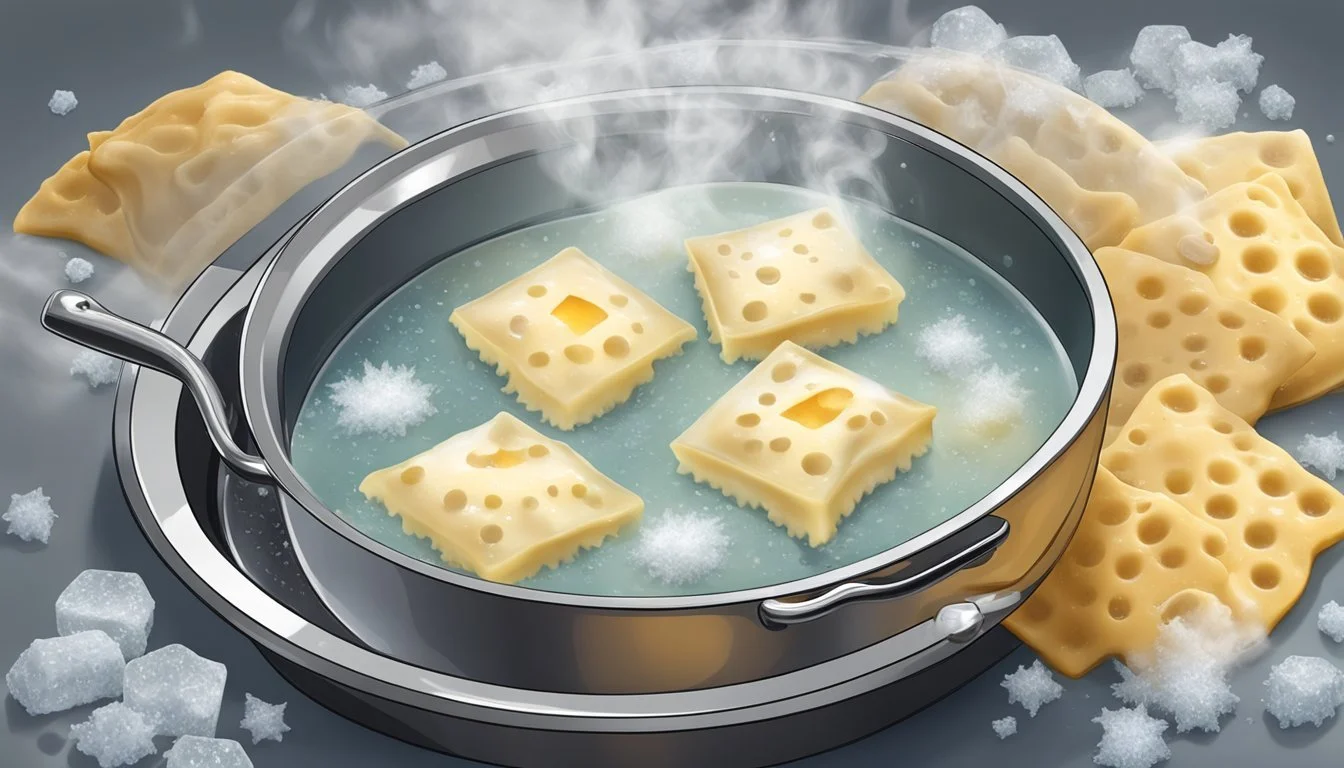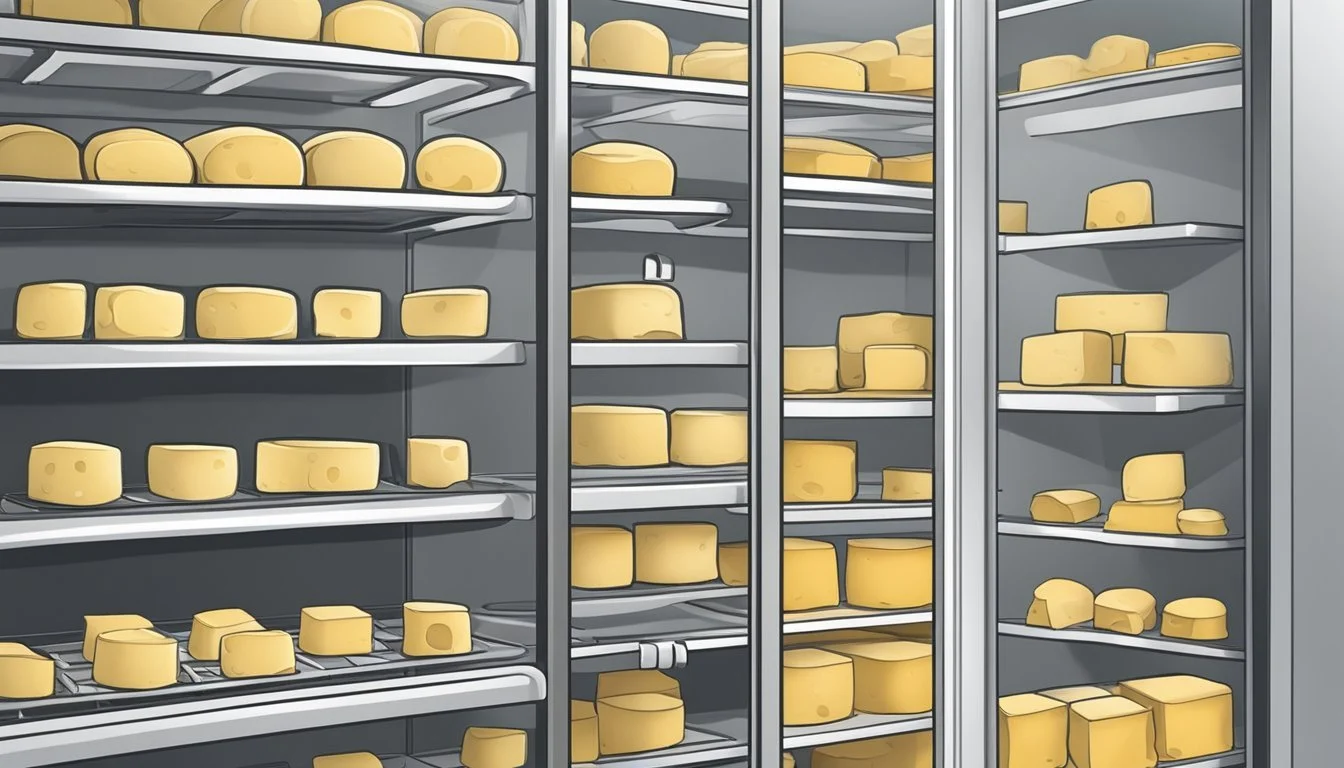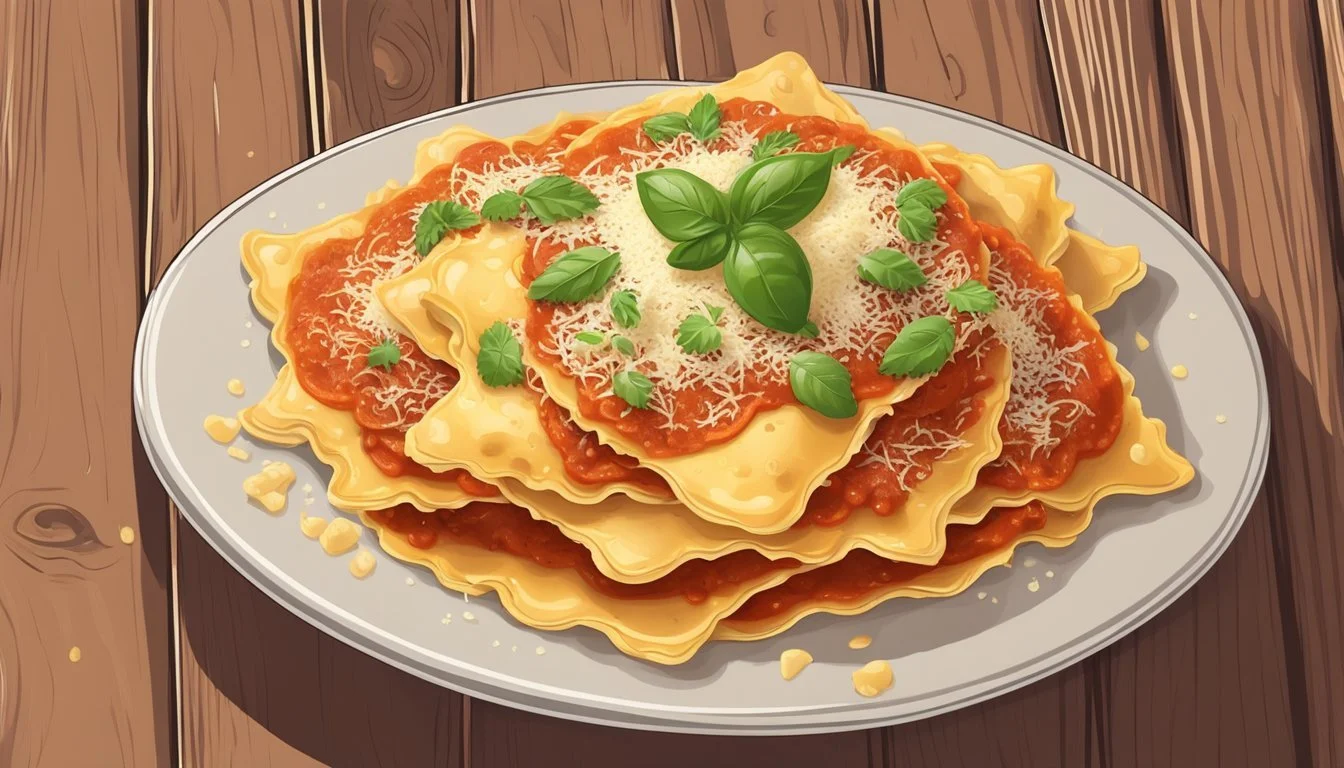How Long Does Cheese Ravioli Last?
Shelf Life and Storage Tips
Cheese ravioli is a beloved dish, but knowing how long it can last in the fridge is crucial for both taste and safety. Fresh cheese ravioli typically lasts in the refrigerator for around 3 to 4 days, while cooked cheese ravioli can be safely stored for about 5 days. Storing cheese ravioli properly is essential to maintaining its freshness and flavor.
When storing ravioli, whether fresh or cooked, it is critical to use airtight containers or wrap the pasta tightly with plastic wrap. Keeping the fridge temperature below 40°F (4°C) also helps extend its shelf life. If you're not planning to eat the ravioli within a couple of days, freezing it is a better option to prevent spoilage.
For those who love the convenience of having cheese ravioli on hand, proper storage techniques are something they must master. This ensures not only the longevity of the ravioli but also preserves its texture and taste. Whether refrigerated or frozen, attention to detail in storage can make all the difference in enjoying this classic dish.
Understanding Cheese Ravioli
Cheese ravioli is a beloved dish with roots in Italy. Typically, it comprises two main components: the pasta and the filling.
Ingredients:
The pasta is usually made from flour, eggs, and water.
Common fillings include ricotta cheese mixed with other ingredients like spinach or parmesan.
Cheese Filling:
Ricotta cheese is a traditional choice, offering a creamy texture.
Spinach may be added for flavor and nutritional value.
Types of Cheese Ravioli
Often made at home or purchased from specialty stores.
Must be consumed within a few days due to its shorter shelf life.
Store-Bought Ravioli:
Available in both refrigerated and frozen forms.
Offers convenience and a longer shelf life.
Homemade vs. Store-Bought
Homemade Ravioli: Generally fresher and more customizable but requires more effort and has a shorter storage life.
Store-Bought Ravioli: Offers ease of use and longer storage options.
Storage Guidelines
Refrigerated:
Fresh, uncooked ravioli: Lasts 3 to 4 days in the fridge.
Cooked ravioli: Safe for up to 5 days.
Frozen:
Keeps well for up to two months if stored properly.
The appeal of cheese ravioli lies in its simplicity and versatility, making it a timeless favorite.
Factors Affecting Shelf Life
The shelf life of cheese ravioli depends on several crucial factors, including its composition and how it is packaged and labeled.
Composition and Ingredients
The ingredients used in cheese ravioli significantly impact its shelf life. Ravioli filled with soft cheeses like ricotta or mozzarella tend to have a shorter shelf life. These cheeses have higher moisture content, which can accelerate bacterial growth.
In contrast, ravioli filled with hard cheeses such as Parmesan tend to last longer due to their lower moisture levels.
Freshness of ingredients also plays a role. Freshly made ravioli with simple, fresh ingredients typically have a shelf life of around 3 to 4 days in the refrigerator. Homemade ravioli, if properly stored, can last up to 7 days.
Packaging and Labeling
Packaging is critical in extending the shelf life of cheese ravioli. Airtight containers help prevent moisture and bacteria from entering, thus slowing down spoilage. Vacuum-sealing is another effective method, as it removes air and reduces the risk of bacterial growth.
Proper labeling, including an expiration date, is essential for consumers to know how long the product is safe to eat. Opened ravioli should be consumed within the recommended time stated on the label. For unopened store-bought ravioli, it should still be checked for use-by dates to ensure safety.
Packaging and labeling must be done with careful attention to detail to ensure the ravioli remains fresh for as long as possible.
Storing Fresh Ravioli
Proper storage is crucial for maintaining the freshness and quality of your cheese ravioli. This ensures that the ravioli remains tasty and safe to eat.
In the Refrigerator
Fresh cheese ravioli typically lasts around 3 to 4 days in the refrigerator. To maximize freshness, place the ravioli in airtight containers. This helps prevent moisture and odors from affecting the pasta.
Keep the containers in the coldest part of the fridge, which is usually the back of the bottom shelf. Wrapping the ravioli in plastic wrap before placing it in the container can provide an additional layer of protection. If possible, consume the ravioli within the first couple of days for the best quality.
Freezing Fresh Ravioli
Freezing is an excellent way to extend the shelf life of fresh cheese ravioli. To do this, first, place the ravioli on a baking sheet in a single layer and freeze until solid.
Once frozen, transfer the ravioli to airtight containers or freezer bags. This method helps to prevent the ravioli from sticking together. Label the containers with the date for easy tracking.
Frozen ravioli can last for 1 to 2 months in the freezer while maintaining optimal quality. Before cooking, the ravioli does not need to be thawed; it can be directly boiled straight from the freezer.
Storing Cooked Ravioli
Proper storage of cooked ravioli ensures it remains fresh and delicious. Two effective methods are using the refrigerator and freezing.
In the Refrigerator
Cooked ravioli can last 3-5 days when stored correctly in the refrigerator. Use shallow, air-tight containers or resealable plastic bags to minimize air exposure. Ensuring the ravioli is stored within 2 hours of cooking is crucial to prevent bacterial growth.
Separating the ravioli into portions before refrigerating can make reheating easier. When ready to eat, reheat in the microwave or on the stovetop for even heating. Adding a splash of water or sauce can help maintain moisture.
Freezing Cooked Ravioli
Freezing cooked ravioli extends its shelf life to 1-2 months. Use airtight containers or heavy-duty freezer bags to prevent freezer burn. Lay the ravioli in a single layer on a baking sheet to freeze individually before transferring to a container.
For best results, freeze ravioli with sauce rather than dry to preserve texture and flavor. When ready to eat, thaw in the refrigerator overnight. Reheat using a microwave-safe dish or on the stovetop, ensuring it reaches a safe temperature before consumption.
Reheating and Thawing Ravioli
Reheating and thawing ravioli properly ensures that it remains delicious and safe to eat. Here are specific methods for using the microwave, stovetop, and thawing techniques.
Using the Microwave
Microwaving is a quick and convenient way to reheat ravioli. To do this, place the ravioli in a microwave-safe dish and cover it with a damp paper towel. This helps retain moisture and prevent the pasta from drying out.
Set the microwave to medium power and heat for 2-3 minutes. Check the ravioli halfway through and stir or flip them to ensure even heating. If the ravioli are frozen, increase the heating time to 4-5 minutes, again stirring halfway through. Add a touch of water or sauce to the dish if the ravioli seem too dry.
When done, let the ravioli sit for a minute before serving. This allows the heat to diffuse evenly, ensuring a better texture and taste.
Heating on the Stovetop
For those who prefer a stovetop method, start by heating a small amount of oil or butter in a pan over medium heat. Gently place the ravioli in the pan and cover it with a lid to maintain moisture. Heat for about 4-5 minutes, stirring occasionally.
If reheating frozen ravioli, add a few tablespoons of water to the pan before covering. This creates steam, helping thaw and heat the ravioli evenly. Check the pasta frequently to avoid sticking or burning.
If the ravioli are larger, you may need to extend the heating time by a few minutes. Once heated thoroughly, transfer the ravioli to a plate and serve immediately. This method helps maintain a nice, slightly crispy texture.
Thawing Techniques
Thawing ravioli before reheating can help preserve its texture and flavor. The safest and most effective method is to place the frozen ravioli in the refrigerator for several hours or overnight. This gradual thawing prevents the pasta from becoming mushy.
For a quicker method, place the frozen ravioli in a sealed plastic bag and submerge it in a bowl of cold water. Change the water every 30 minutes until the ravioli are thawed, typically taking 1-2 hours.
Avoid using hot water for thawing as it can cause the ravioli to cook unevenly or become too soft. Once thawed, follow your preferred reheating method for the best results.
Identifying Spoilage
Cheese ravioli can show clear signs when it has gone bad. Key indicators of spoilage include changes in appearance, texture, and odor.
Visual and Texture Changes
Spoiled cheese ravioli may exhibit discoloration. Fresh ravioli typically has uniform color. If the ravioli turns yellow, brown, or green, it indicates spoilage.
Look for mold growth. Mold appears as fuzzy spots that may be white, green, or blue. Even small mold patches mean the ravioli is no longer safe to eat.
Check for a slimy texture. Fresh ravioli should feel firm. If the surface becomes slick or sticky, it is a sign the ravioli has spoiled.
Broken or damaged ravioli can also provide a breeding ground for bacteria. Always check for any tears or punctures.
Odor Detection
An off smell is a primary indicator of spoiled cheese ravioli. Fresh ravioli should have a mild, slightly cheesy aroma.
If the ravioli emits a sour, rancid, or otherwise unusual odor, it has likely gone bad. Be cautious with any sharp, pungent smells, as they often signify bacterial growth.
Sometimes the odor of spoiled ravioli can be subtle. It's crucial to sniff closely to detect any foul scents.
A combination of visual, textural, and olfactory signals helps ensure you're consuming only fresh, safe cheese ravioli.
Food Safety Considerations
Ensuring the safety of cheese ravioli requires proper handling to prevent spoilage and foodborne illnesses. Key practices include proper storage and mindful consideration of expiration dates.
Preventing Foodborne Illnesses
Cheese ravioli can be susceptible to bacterial contamination if not stored correctly. This risk increases when ravioli contains meat. To minimize potential hazards, it is critical to refrigerate ravioli at temperatures below 40°F (4°C).
Storage Tips:
Fresh Cheese Ravioli: Store in the fridge for up to 4 days.
Cooked Cheese Ravioli: Can last about 5 days in the refrigerator.
Freezing: If not consumed within a few days, freeze ravioli to extend its shelf life.
Mold and bacteria are common culprits in food spoilage. Preventing contamination involves keeping the ravioli sealed and avoiding exposure to warm, moist environments. These steps are crucial to maintaining food safety and reducing the risk of foodborne illnesses.
Optimal Use of Cheese Ravioli
Cheese ravioli has a versatile taste that pairs well with various sauces, making it an ideal dish for creative meal options. Whether it's a quick dinner or leftover usage, it fits numerous culinary scenarios.
Creative Serving Suggestions
Classic Marinara Sauce
Pair cheese ravioli with a classic marinara sauce for a flavorful, simple meal. Opt for a sauce made with tomatoes, garlic, and fresh herbs. Sprinkle with freshly grated Parmesan cheese to enhance the taste.
Mushroom Cream Sauce
A creamy mushroom sauce complements the texture of cheese ravioli beautifully. Cook mushrooms with shallots and garlic, then add cream and thyme. This combination creates a rich, savory dish perfect for special occasions.
Ravioli Pizza
Transform leftovers into a unique ravioli pizza. Place cooked cheese ravioli on a pizza crust, drizzle with olive oil, and top with mozzarella cheese and marinara sauce. Bake until the crust is golden and the cheese melts.
Brown Butter Sage Sauce
A simple yet elegant option is to toss cheese ravioli in a brown butter sage sauce. Melt butter until it turns golden brown, then add fresh sage leaves and a touch of lemon juice. The nutty flavor of the butter enhances the ravioli.
Technical Tips for Freezing and Storage
Proper storage of cheese ravioli ensures quality, taste, and safety even after months of freezing. Key techniques include using freezer-safe containers and preventing freezer burn.
Using Freezer-Safe Containers
When freezing ravioli, freezer-safe containers are essential. These containers prevent moisture loss and freezer odors from affecting the food. Lay the ravioli in a single layer on a baking sheet. Freeze until solid.
Transfer the solid ravioli into the containers. Avoid overfilling to maintain the ravioli's shape and texture. Heavy-duty resealable plastic bags can also be used. Squeeze out as much air as possible before sealing. This reduces the risk of freezer burn.
Preventing Freezer Burn
Freezer burn occurs when air reaches the ravioli, causing dryness and texture changes. To prevent this, flash-freeze ravioli on a baking tray for 15-20 minutes until they are solid. Transfer them into tightly sealed containers or heavy-duty resealable plastic bags.
Removing as much air as possible is crucial. Vacuum sealing is an excellent option if available. Ensure the ravioli are dry before freezing, as excess moisture increases the risk of freezer burn.
Labeling and Organizing
Maintaining an organized freezer helps in tracking stored items. Label each container or bag with the contents and freezing date. This helps in identifying the ravioli without opening the containers. Use waterproof markers or adhesive labels for clarity.
Arrange the ravioli in a single layer to avoid sticking and make it easier to access individual portions. Storing ravioli flat prevents them from clumping together, which saves time when you need to defrost a portion.
Thawed Cooked Ravioli
When thawing cooked ravioli, transfer them from the freezer to the fridge. Allow them to thaw slowly over a few hours. Thawed ravioli should be reheated immediately to avoid bacterial growth. Use a microwave, stovetop, or oven for reheating.
Never refreeze thawed ravioli, as this compromises the texture and flavor. Consume within a day or two of thawing for the best taste and safety. Proper storage techniques help maintain the ravioli's quality, ensuring a delicious meal even after freezing.
Conclusion
Cheese ravioli can have different shelf lives depending on how it's stored.
Fresh cheese ravioli typically lasts 3 to 4 days in the refrigerator. It's crucial to keep it at a consistent, cold temperature to maintain its quality.
Cooked cheese ravioli can remain fresh in the fridge for about 5 days. Ensure it's placed in an airtight container to avoid contamination and moisture loss.
Frozen cheese ravioli can last much longer. When properly stored, it can be good for several months. Always check for freezer burn, which can affect both texture and taste.
Signs of spoilage include unusual color, off smell, and slimy texture. Never leave ravioli at room temperature for extended periods, as this can accelerate spoilage.
Understanding these guidelines helps ensure the ravioli is safe to eat and maintains its delicious flavor.


